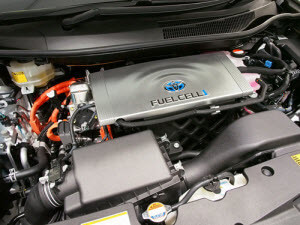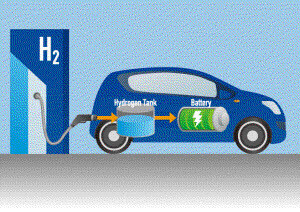New Biomaterial is a Surprising Stepping Stone to Make Hydrogen Powered Vehicles Main Stream
Within the specialty gas industry, there has been a high demand for greener fuel sources. This demand can decrease emissions and provide a more sustainable approach to fuel that consumers use. One of these greener fuel sources includes hydrogen, however, this source is not always readily available to consumers.
While many agree that hydrogen is beneficial to the environment and companies, the problem is that there is a lack of availability when it comes to obtaining hydrogen. Furthermore, finding hydrogen at a reasonable prices has also been a challenge.
Accessible Hydrogen Filling Stations
 Because hydrogen is a reliable source of green fuel but isn’t always accessible, it’s important to increase the awareness to make it more available to consumers. The US Department of Energy (DOE) launched H2USA to address this. According to the Alternative Fuels Data Center, these efforts are “focused on advancing hydrogen infrastructure to support more transportation energy options for U.S. consumers.”
Because hydrogen is a reliable source of green fuel but isn’t always accessible, it’s important to increase the awareness to make it more available to consumers. The US Department of Energy (DOE) launched H2USA to address this. According to the Alternative Fuels Data Center, these efforts are “focused on advancing hydrogen infrastructure to support more transportation energy options for U.S. consumers.”
The partnership with fuel cell electric vehicle original equipment manufacturers will help with transition barriers as well as provide data needed as hydrogen vehicles begin to arise on the market. The market will expand, as a result, and facilities will either be hydrogen based only or pumps within other fuel centers.
Powering Hydrogen Fueled Cars
 Hydrogen fueled cars haven’t been fully realized, due largely in part to the fact that electrolysis can be difficult and expensive. Electrolysis is the process in which the hydrogen and oxygen gases are separated by electric current.
Hydrogen fueled cars haven’t been fully realized, due largely in part to the fact that electrolysis can be difficult and expensive. Electrolysis is the process in which the hydrogen and oxygen gases are separated by electric current.
However, the greenoptimist.com notes that “Nature Chemistry recently included a paper that detailed the newly found method. The scientists created a biomaterial that can divide the two elements in water. Called P22-Hyd, it is a modified enzyme protected by a protein shell. Together, the material reacts and catalyzes the separation process, enabling hydrogen to form at a rate of 150 times more efficiency.”
This enzyme is sustainable and, therefore, makes the process more affordable. While the traditional method of hydrogen separation includes platinum which is expensive, P22-Hyd doesn’t have to be mined. In addition, it’s biodegradable.
P22-Hyd could make hydrogen fueled cars a plausible possibility.
The Relationship between Fueling Stations and Hydrogen Fueled Cars
GasWorld Magazine also discusses the benefits of fueling stations and how it can make hydrogen fueled cars a better option. “Not only can hydrogen fueling technology play an integral role in reducing CO2emissions but it can also improve air quality and combat climate change. Drivers benefit from a quieter and more comfortable driving experience due to the quiet operation and smooth acceleration of hydrogen fuel cell vehicles. There’s also little sacrifice to transport performance with refueling taking less than three minutes and hydrogen powered vehicles offering the same range and speed as conventional vehicles.”
Fueling stations are becoming more and more common as different technologies are being used.
To learn about CPV Manufacturing, contact us today!
